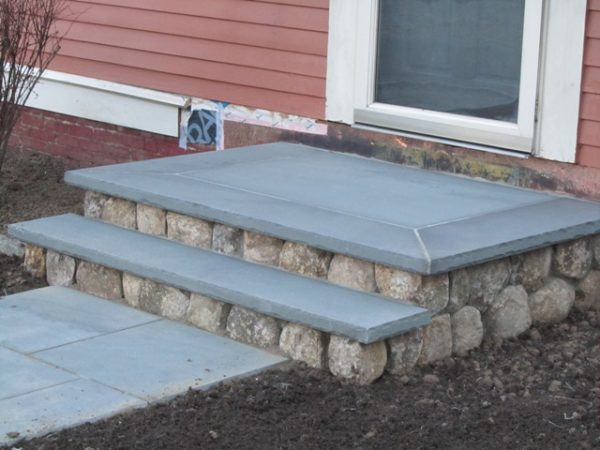
Photo: Masonry steps against wood house
Masonry Steps Against Wood
Whether concrete, pavers or granite, masonry steps, should never be placed directly against wood. Doing so WILL result in rot and water damage to the homes sill foundation. It will also be a neon sign inviting carpenter ants and termites to come into your house and start munching on your home. I guarantee it.
Install Flashing Between House and Masonry
Before installing any masonry, I protect the sheathing with a layer of bituminous waterproof rubber membrane, like Grace’s Ice and Water Shield or Vycor. I then install a metal flashing over it, using one of the these three metals:
- Lead Flashing
- Aluminum Coil Stock
- Copper Sheet Flashing
Installing the Flashing
I run both the metal flashing, and it’s redundant rubber under flashing, from the underside of the door sill so it overlaps the junction of wall sheathing and foundation. Run it long!
Installing Wood Siding and Trim Against Masonry
After the masonry steps are installed, I cover the area between the door sill and the top step of the stoop with a threshold kick plate. Typically I use 5/4-inch piece of PVC since this is touching the masonry as well.
If using wood, I will leave a ¼-inch space between the bottom edge of the kick plate and the masonry step. Make sure to prime and seal all exposed wood and end-grain.
If clapboards are to be installed , I follow the same technique of leaving a 1/4″ air gap. This gap allows the bottom of the clapboard to try and also creates a capillary gap between the siding and the masonry.
